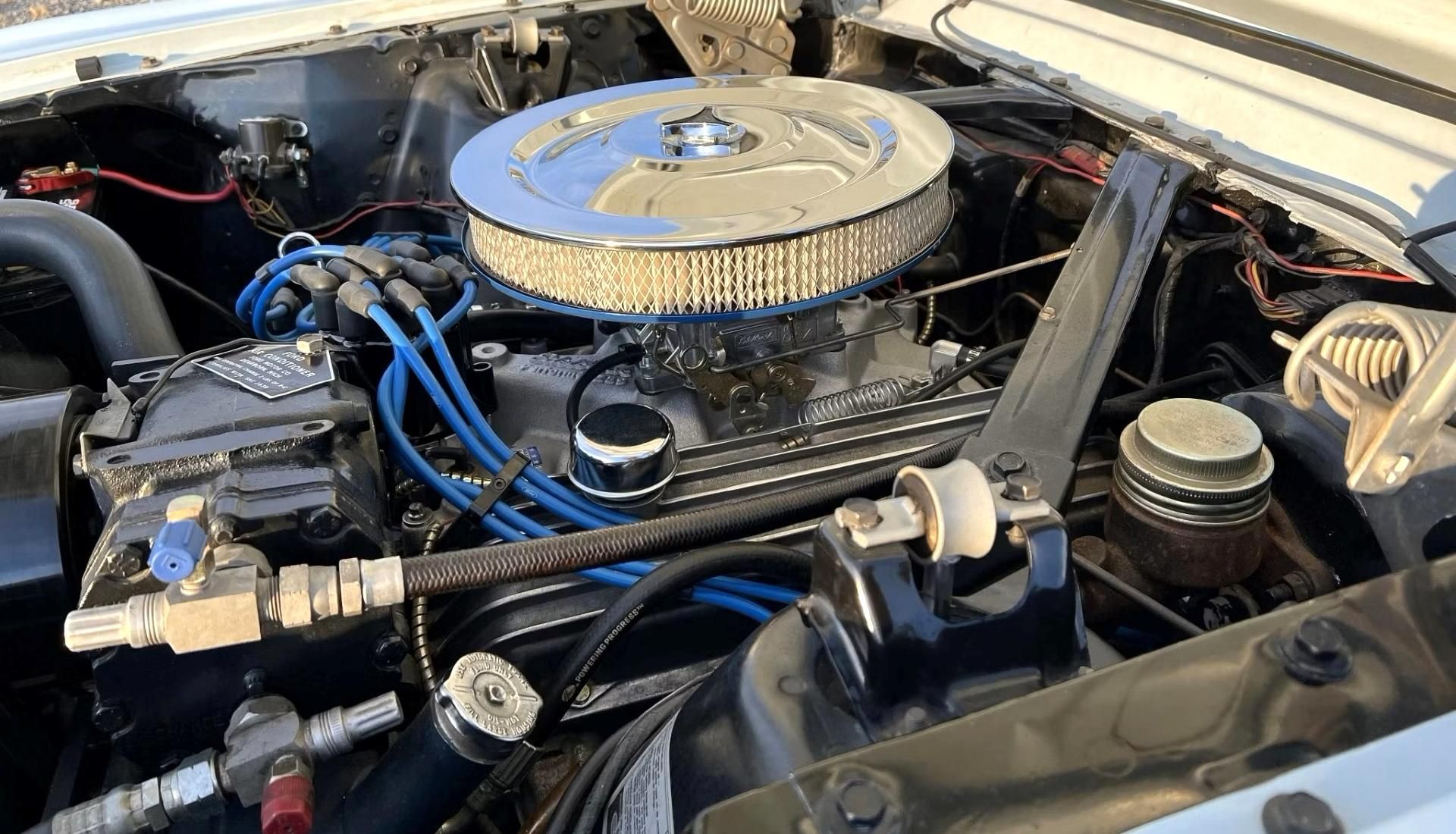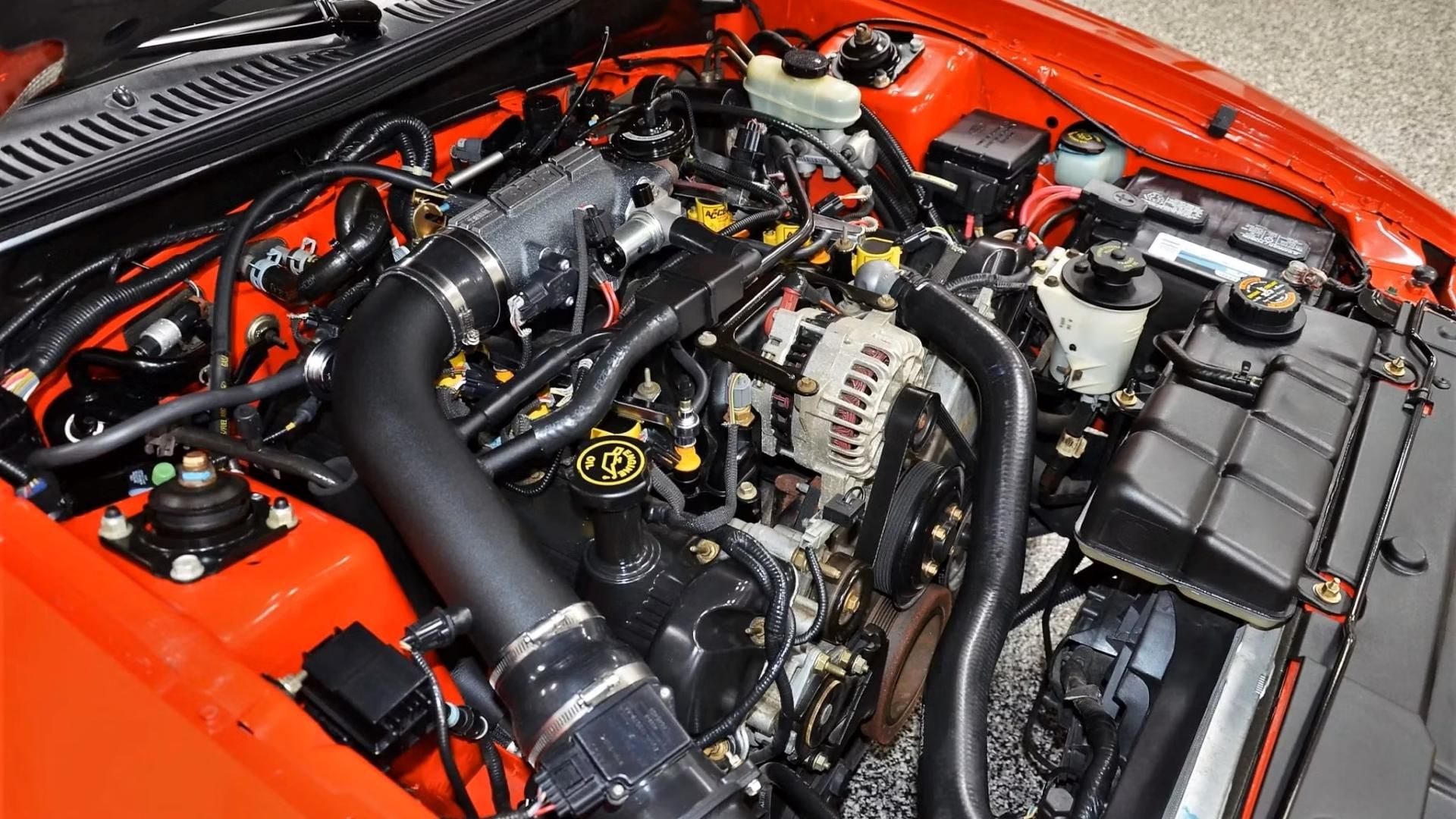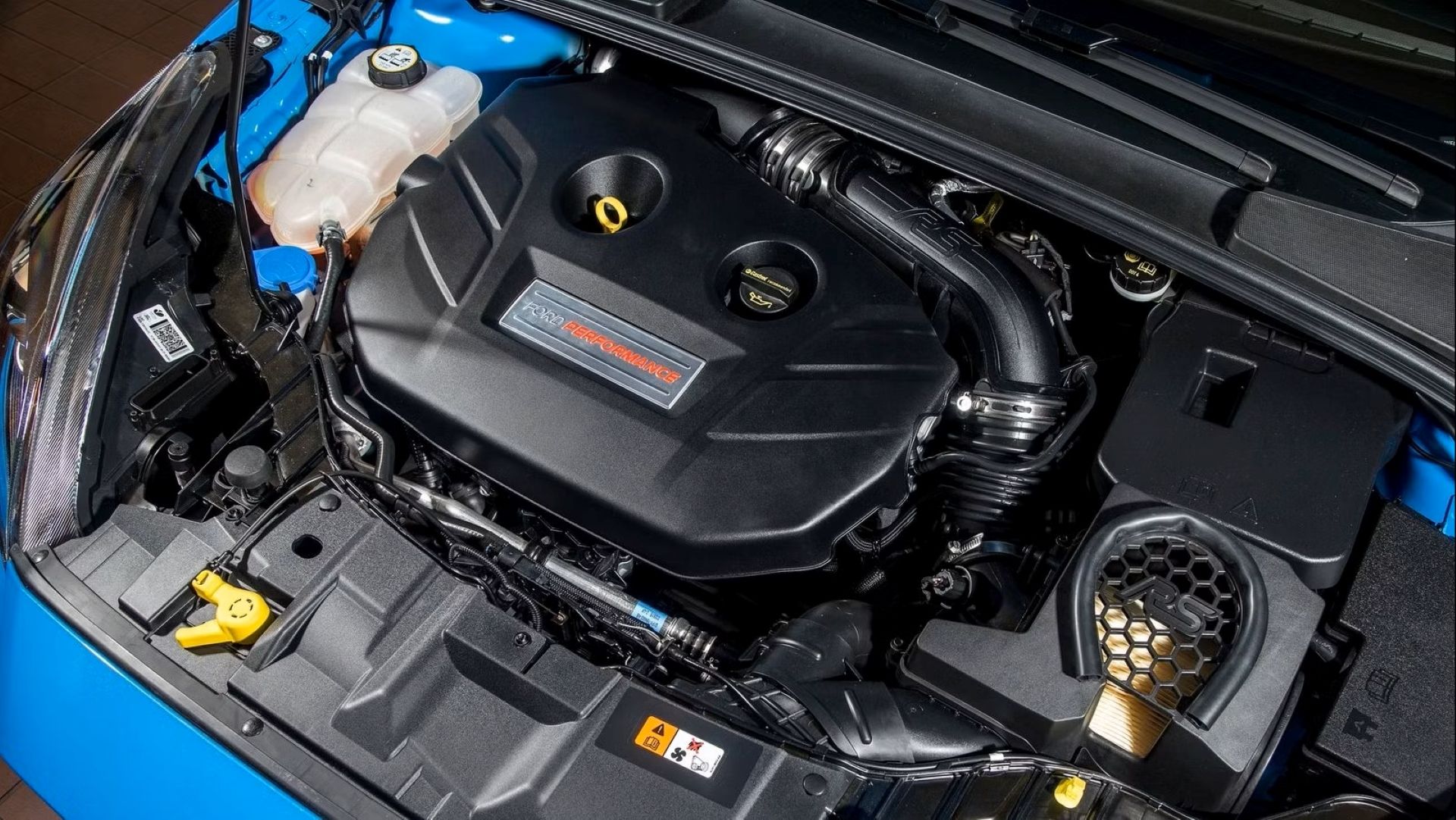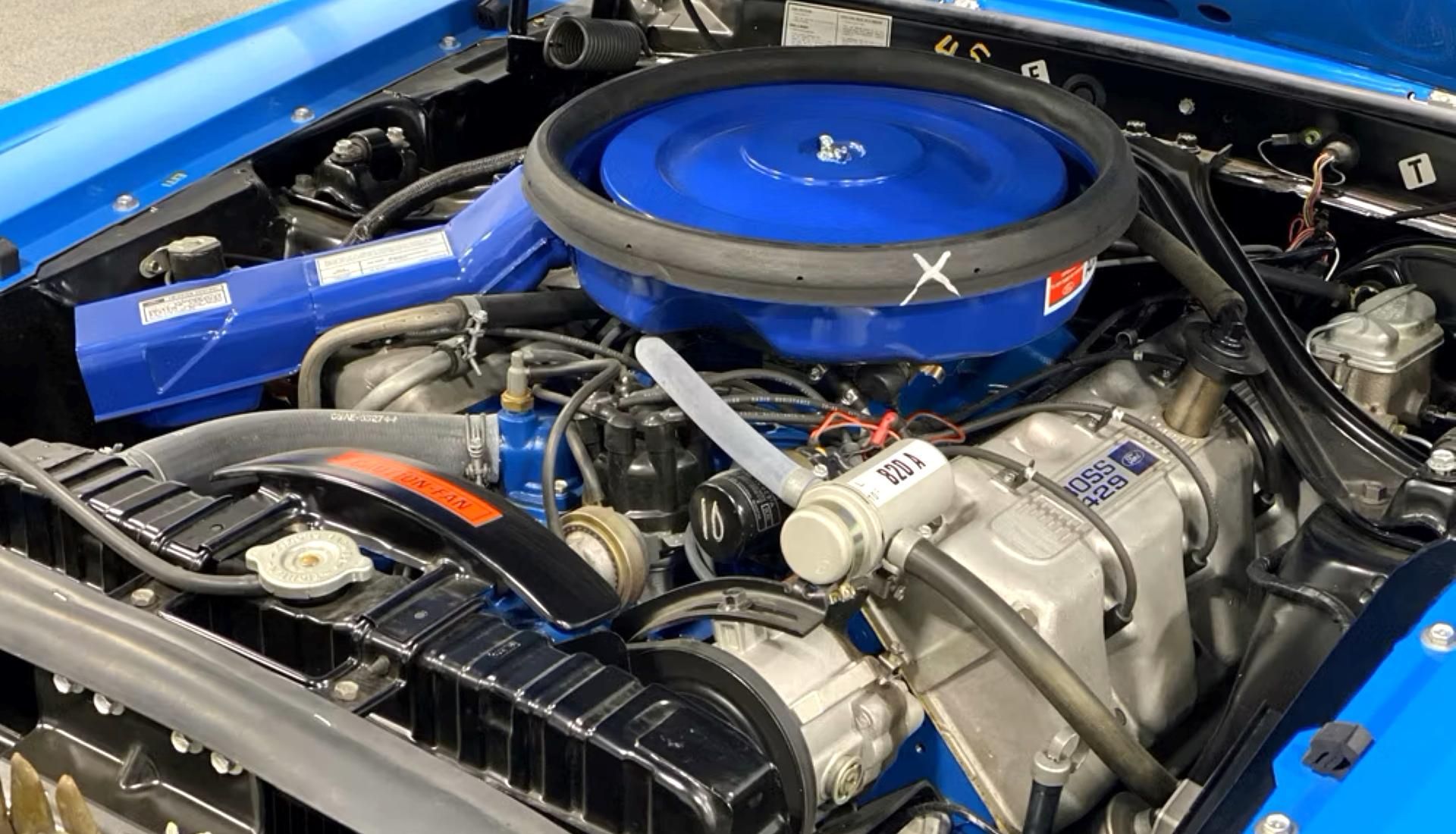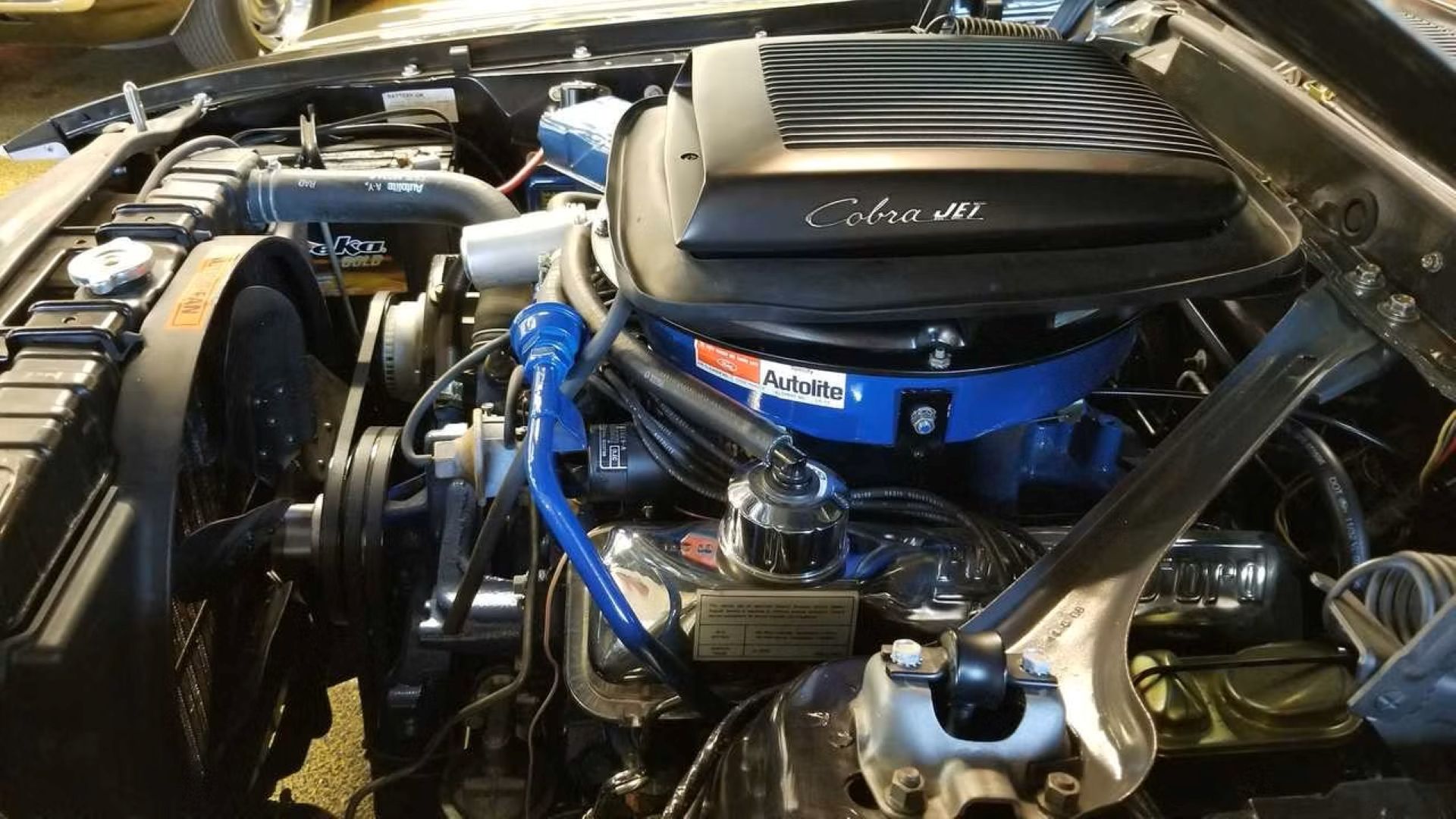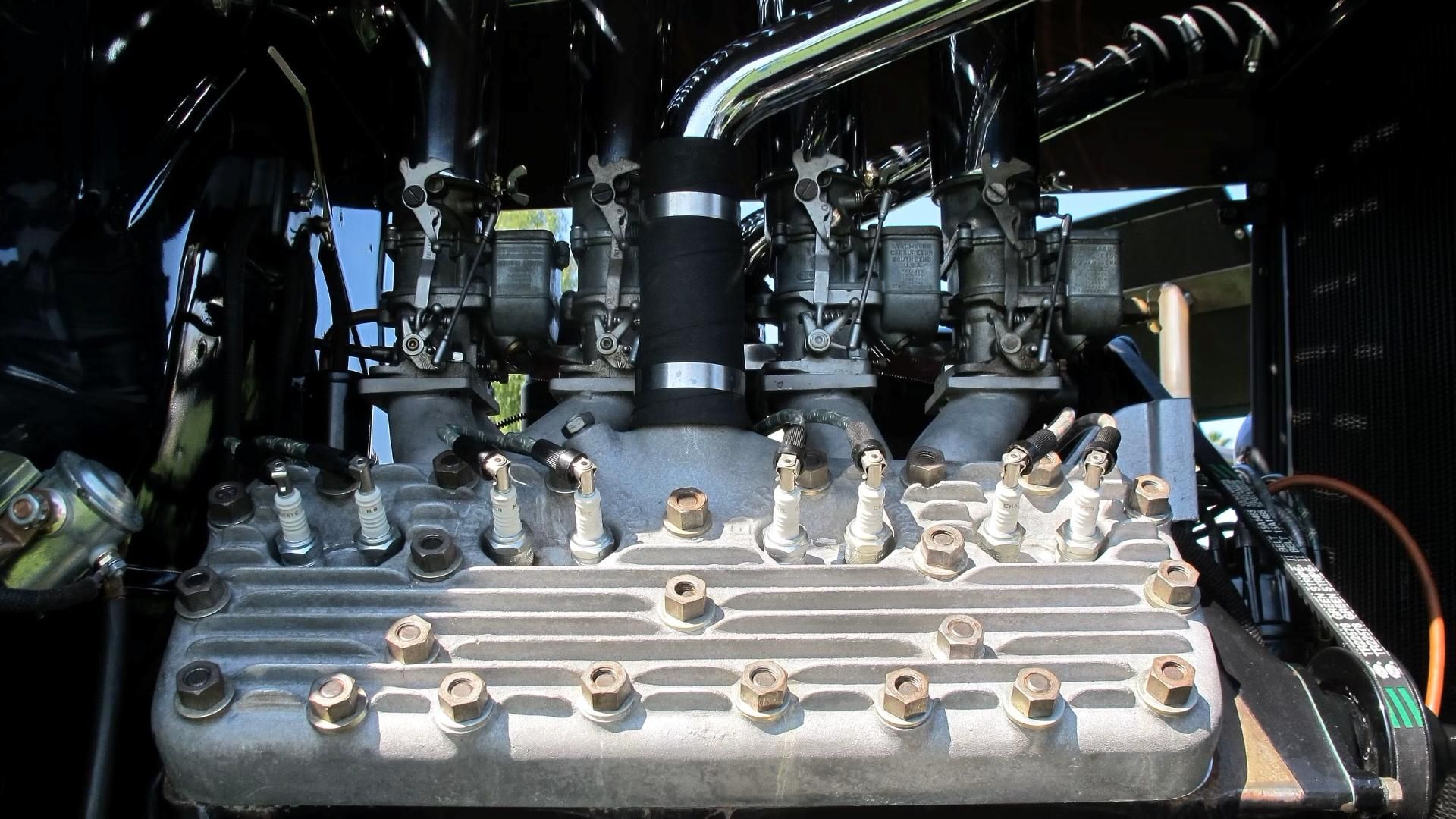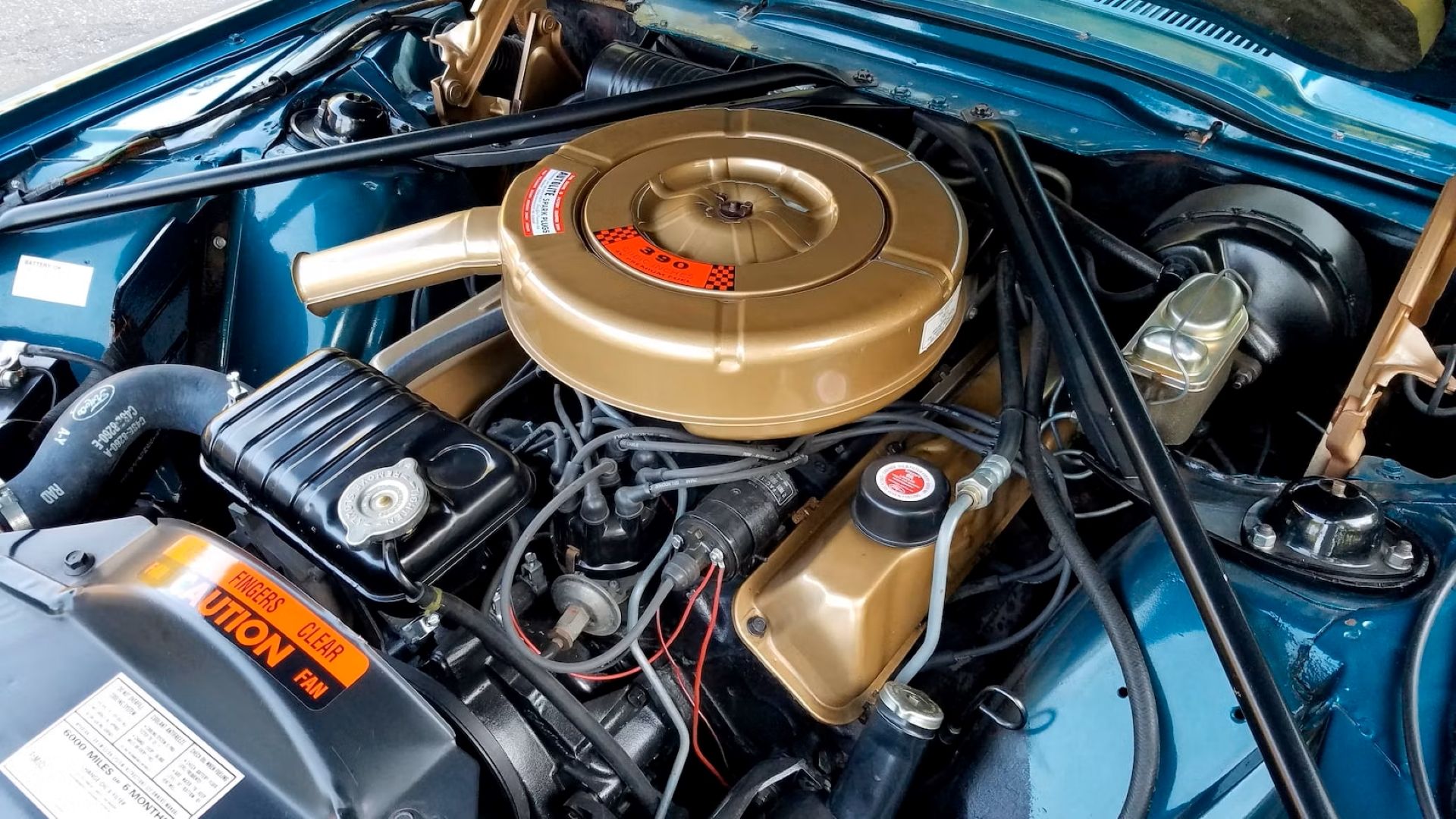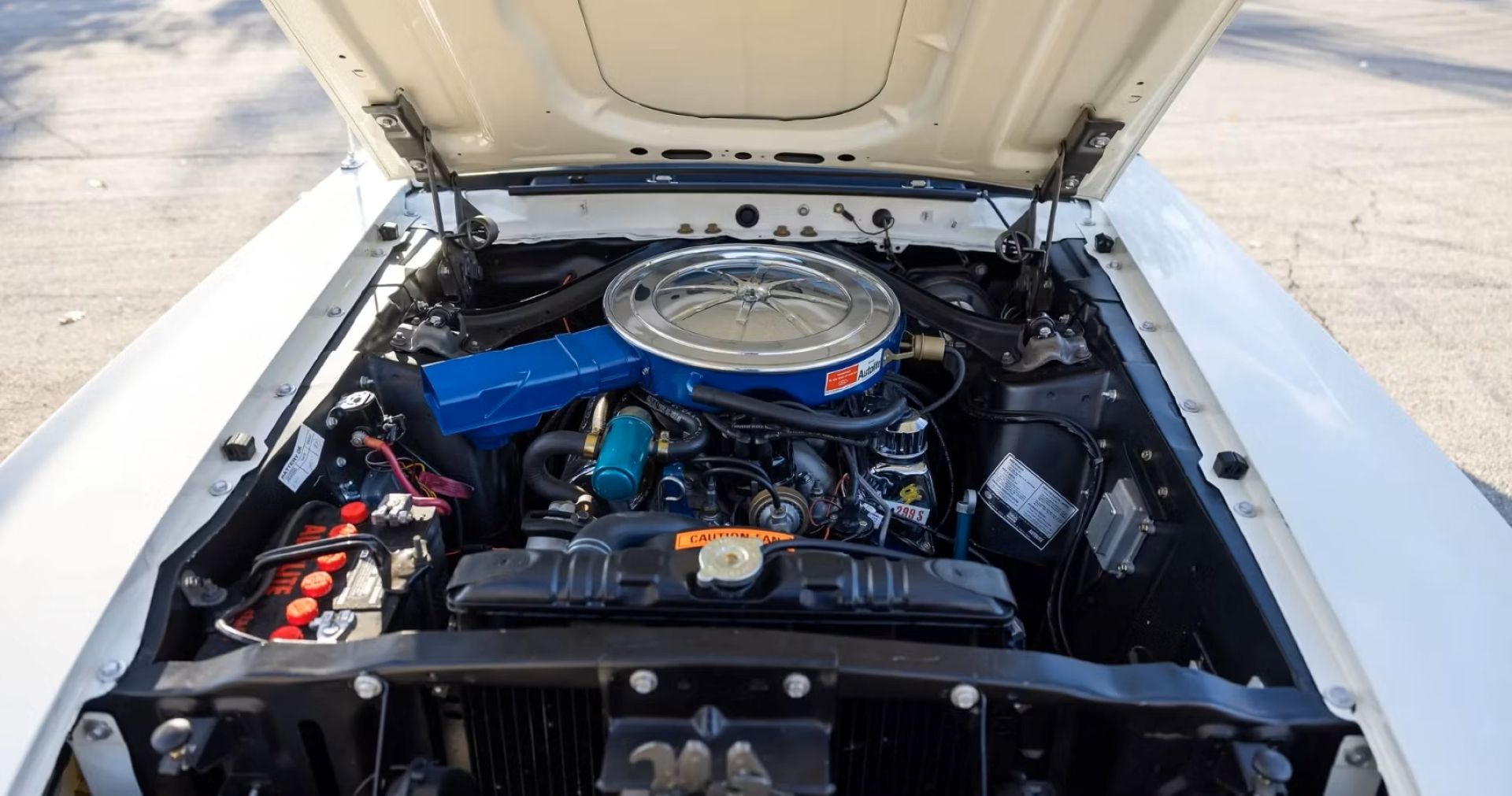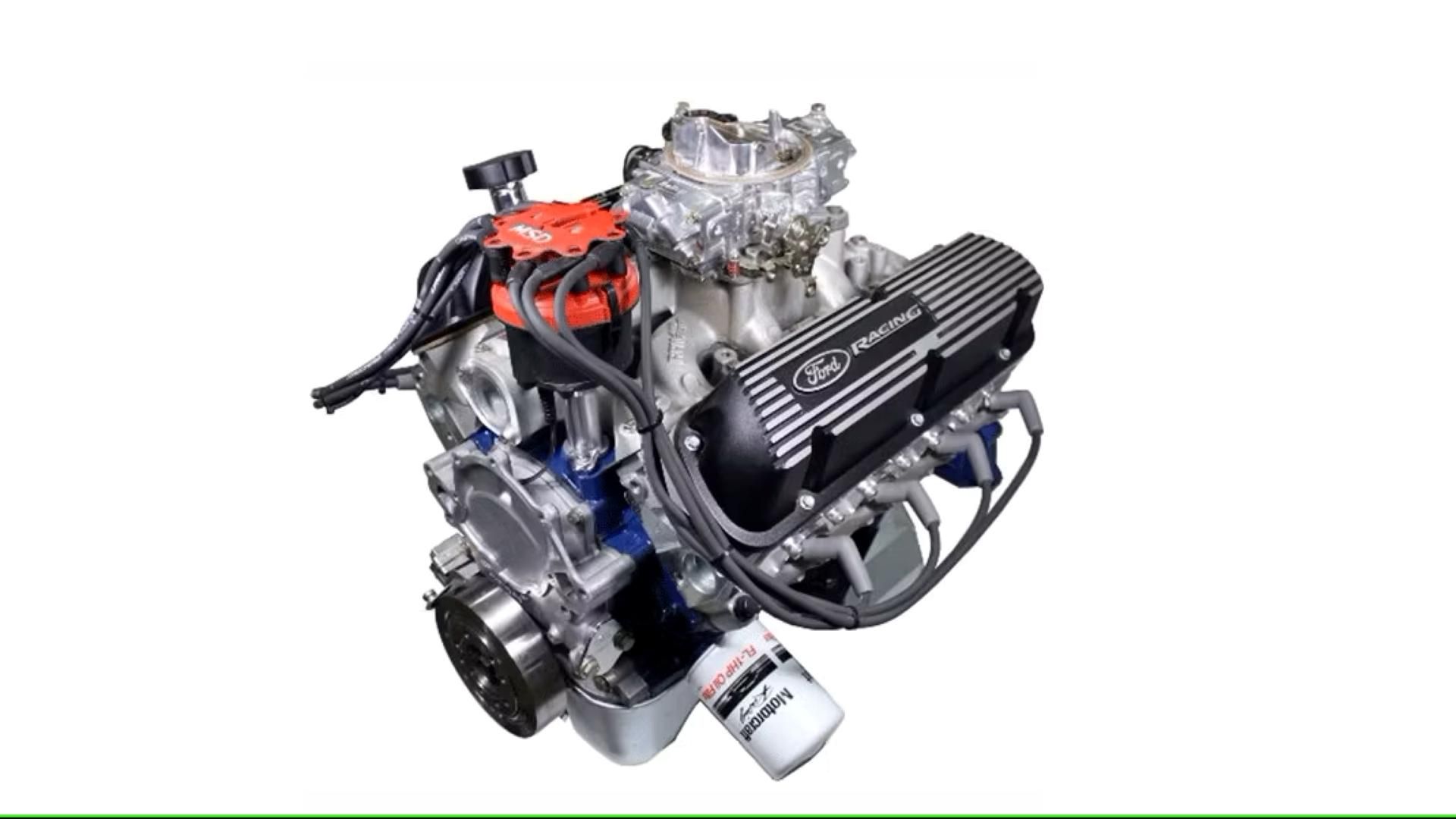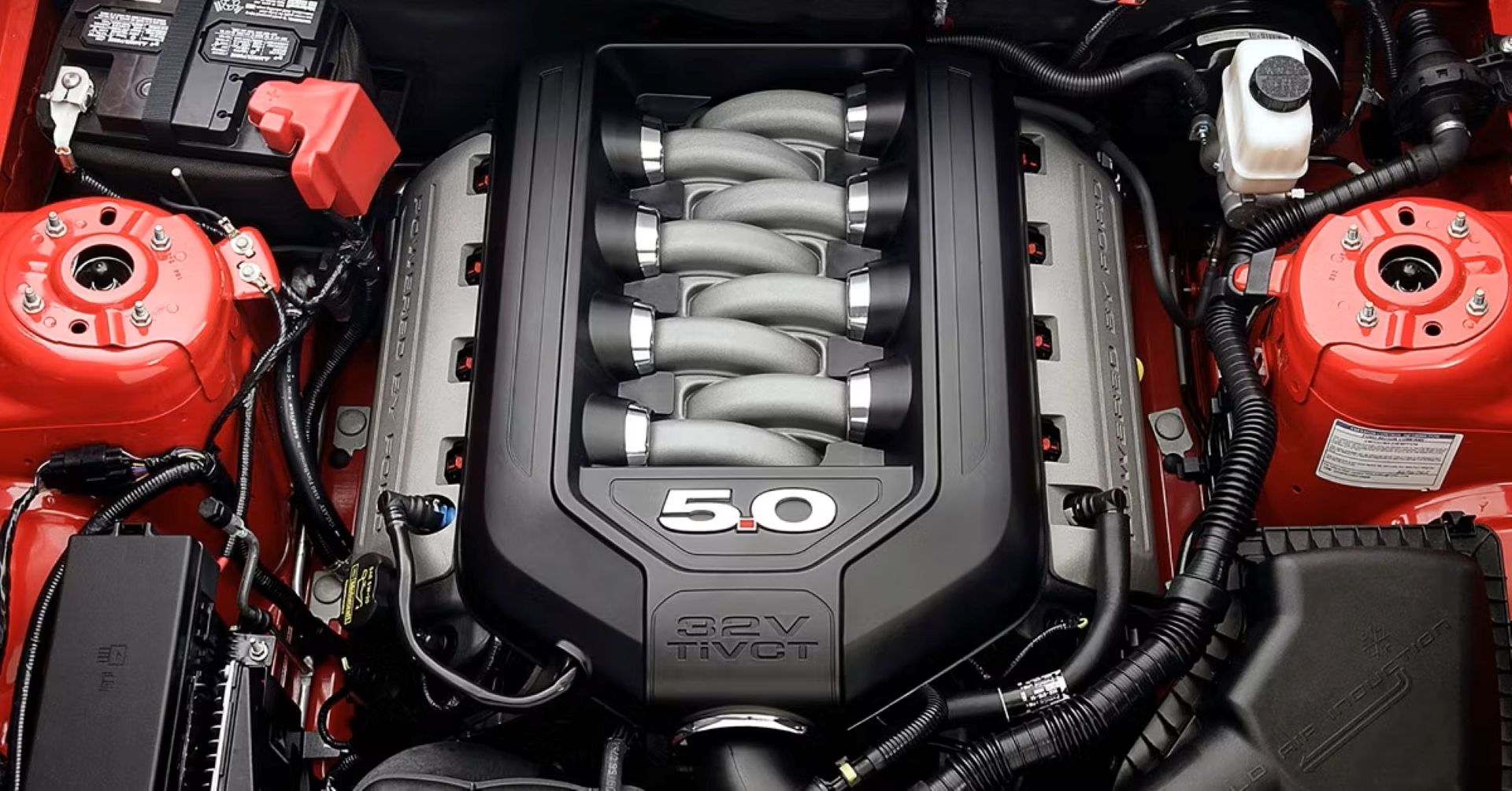Read update
- How we made our engine selections: To choose the most reliable Ford engines ever built, we checked the reliability of these vehicles on J.D. Power. We also thoroughly checked review sites like Carsurvey, Reddit, and model-specific forums like the Ford F-150 Forum for consumer feedback.
Since its establishment in the early 1900s, the Ford Motor Company boasts an enormous fleet of trucks, cars, tractors, and vans, estimated at well over 300 million. Under the hood of this beautiful and stylish range of automobiles are some of the most reliable engines in automotive history. An impressive engine catalog includes robust V8s, venerable V6s, and the occasionally successful inline-fours that won the hearts of fans.
But in the upper echelons of performance cars, a handful of engines stand out as significant achievements in engineering prowess and their importance to the brand. Most importantly, many industry experts and everyday enthusiasts have given these makers of trustworthy car engines favorable reviews for their dependability.
UPDATE: 2024/03/27 18:40 EST BY MONDAY GOMA
How we made our engine selections: To choose the most reliable Ford engines ever built, we checked the reliability of these vehicles on J.D. Power. We also thoroughly checked review sites like Carsurvey, Reddit, and model-specific forums like the Ford F-150 Forum for consumer feedback.
We vetted all the engines on this list by further by checking NHTSA recall information as well as sources such as TuningPro and MotorReviewer for in-depth information pertaining to each engine. We made sure to source performance data from the official Ford website where available.
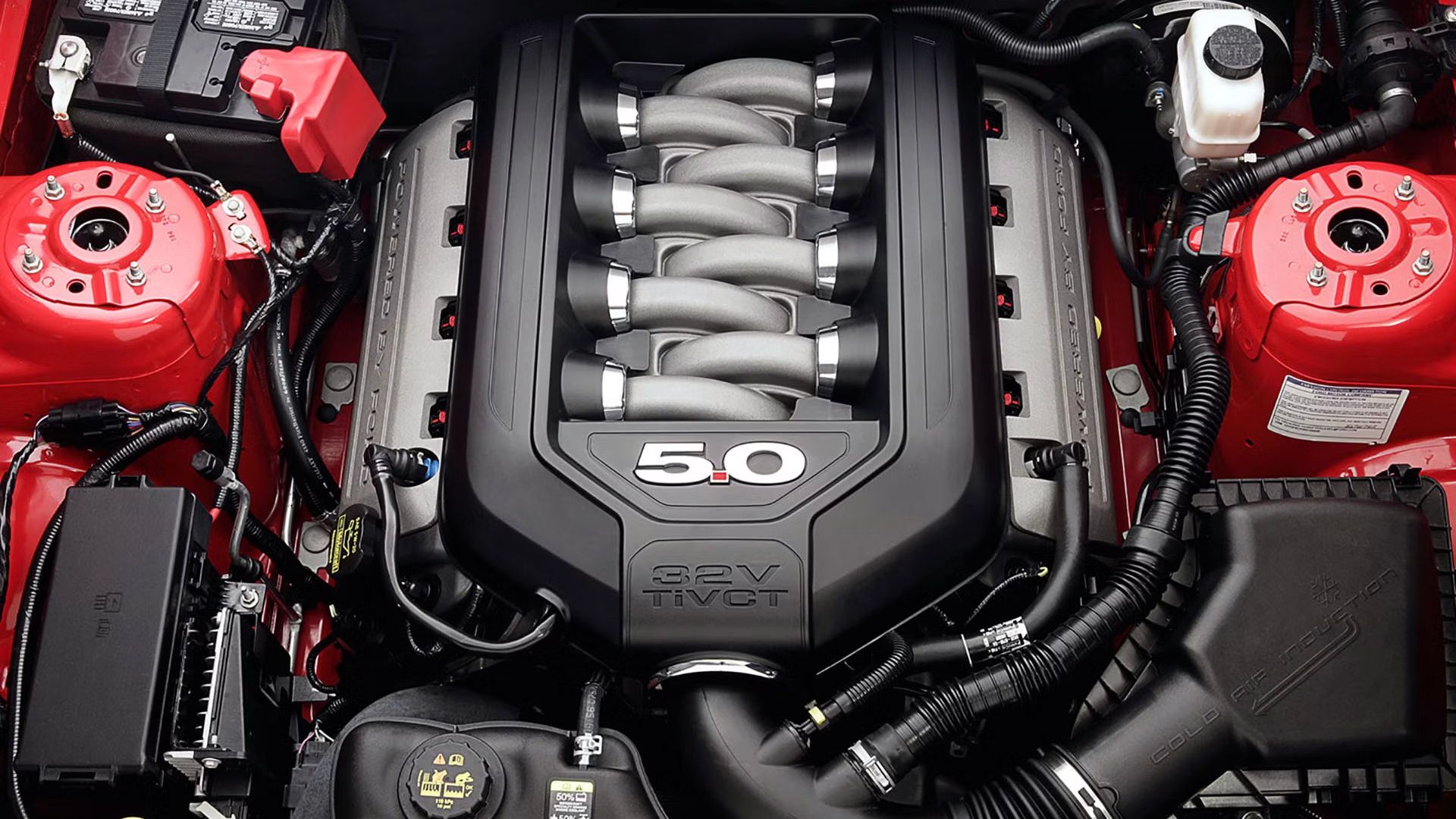
The Most Dependable Ford V8 Engine Ever Made
Ford boasts an enviable track record when it comes to impressively reliable V8 engines, but which takes the crown?10 289 Small Block V8
Ford 289 V8 Engine Specs
|
Manufacturer |
Ford |
|
Production Years |
1963 - 1967 |
|
Configuration |
Naturally-aspirated V8 with supercharger option |
|
Displacement |
4.7 liters |
|
Power |
189 - 390 hp |
|
Torque |
285 - 312 lb-ft |
|
Fuel |
Gasoline |
|
Noteworthy Applications |
Ford Mustang, Fairlane, Galaxy, Country Squire, Custom, GT350, Shelby Cobra Daytona, AC Cobra, GT40 MK1 |
The 289 Small Block Powered The First Ford Mustangs
Ford designed the 289 CID, 4.7-liter V8 engine with a relatively small weight, small dimensions, and decent power to serve as an entry-level V8 for all models. Introduced in the early 1960s, the small-block engine ultimately became the perfect match for the legendary Ford Mustang when it debuted in 1964.
The 289 V8 small-block later spawned iconic iterations such as the factory-tuned HiPo 289 and the race-ready 289 fitted in the ultimate and highly desirable Mustang of the 1960s, the Shelby GT350. Despite being in production for five years, Ford still makes parts and aftermarket components for the reliable 289 Small Block V8.
289 Small Block V8 Reliability & Maintenance Costs
- Average Yearly Maintenance Cost (RepairPal): $709 (Ford Mustang average)
- Est. Maintenance Cost During The First 10 Years (CarEdge): $7,093 (Mustang average)
Owner reviews about the reliability of cars powered by the Ford 289 small block V8 have been overwhelmingly positive. One owner of a 1967 Ford Mustang Sports Sprint 289 gave it a perfect reliability rating of 10 out of 10. Similarly, two other Mustang owners scored it 6/10 and 9/10 respectively. In a separate thread on Carsurvey, another owner of a 1966 Ford Fairlane praised the engine's dependability, mentioning that the car has been virtually trouble-free in the six years of ownership. While some other 1966 Ford Fairlane owners were not as generous with their reliability ratings, none of the issues they encountered were related to the engine. One owner complained about the wiper motor and mentioned replacing the tie rods, while another commented on the rust, among other car-related concerns.
|
Review Date |
Model |
Review Site |
Reliability Score |
Reported Mileage |
|
Jul 13th 2009 |
1967 Ford Mustang Sports Sprint 289 V8 |
Carsurvey |
10/10 |
32,160 miles |
|
Nov 7th 2008 |
1967 Ford Mustang Sports Sprint 289 V8 |
Carsurvey |
6/10 |
N/A |
|
Feb 26th 2004 |
1967 Ford Mustang Coupe 289ci |
Carsurvey |
9/10 |
100,000 miles |
|
Dec 18th 2002 |
1966 Ford Fairlane 500 289cid |
Carsurvey |
9/10 |
165,000 miles |
|
Sep 10th 2009 |
1966 Ford Fairlane 500 289 |
Carsurvey |
5/10 |
80,025 miles |
|
Sep 28th 2010 |
1966 Ford Fairlane 289 |
Carsurvey |
7/10 |
N/A |
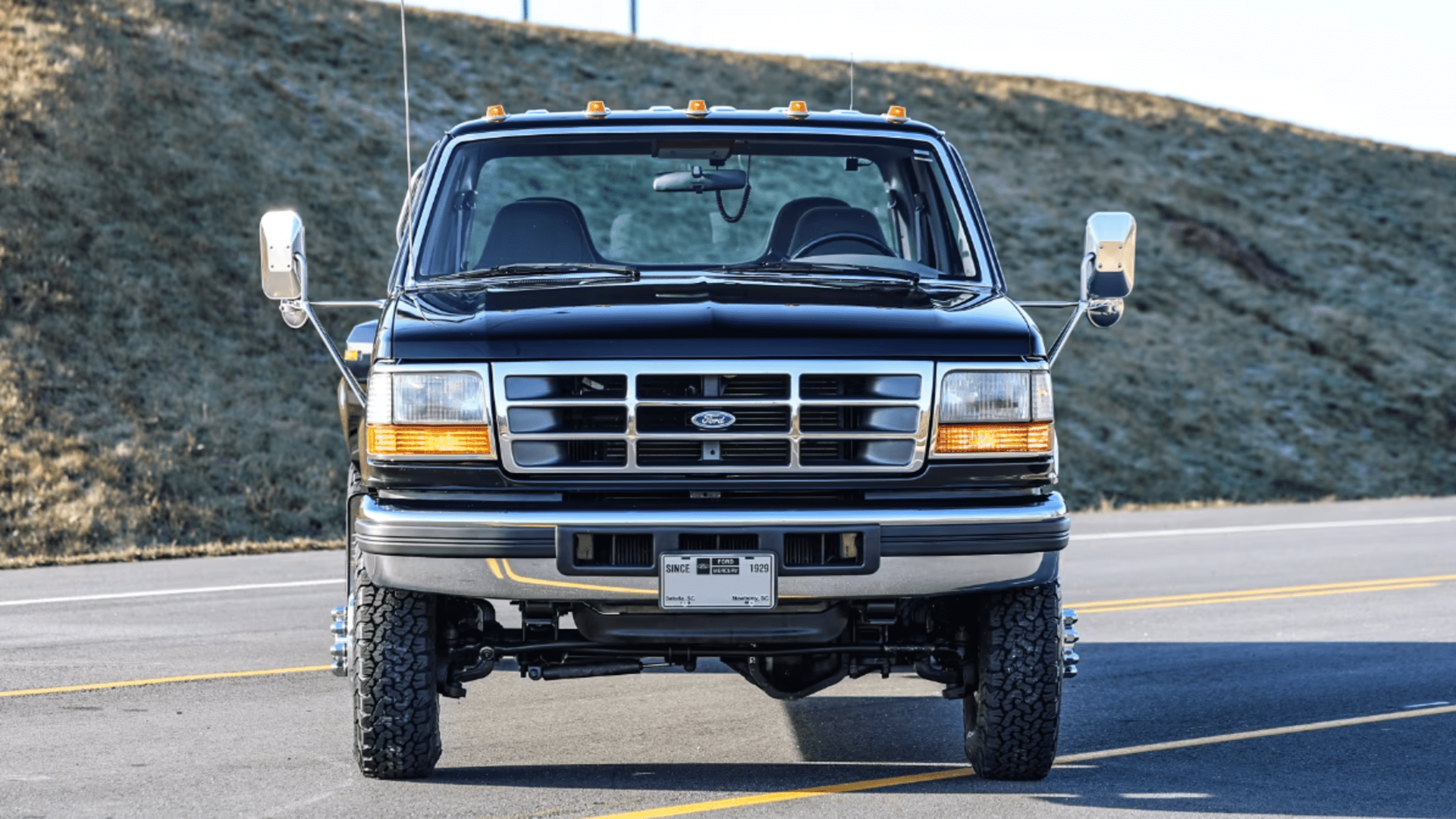
The Dependable Ford V8 Engine That'll Last You 1 Million Miles
Ford has proven themselves time and time again when it comes to the durability of their V8 engines, but which is capable of over 1 million miles?9 4.6-Liter Modular V8
4.6-Liter Modular V8 Engine Specs
|
Manufacturer |
Ford |
|
Production Years |
1991 - 2014 |
|
Configuration |
90-degree V8 |
|
Displacement |
4.6 liters (280.8 cid) |
|
Power |
190 - 390 hp |
|
Torque |
260 - 390 lb-ft |
|
Fuel |
Gasoline |
|
Noteworthy Applications |
1991 - 2011 Lincoln Town Car, 1992 - 2012 Mercury Grand Marquis, 1992 - 2012 Ford Crown Victoria, 2005 - 2010 Ford Mustang GT/Bullit, 1996 - 2004 Ford Mustang SVT Cobra/Mach 1 |
The Ford 4.6-Liter Modular V8 Had A Long Production Run
Originally introduced in 1991, the Ford 4.6-liter modular V8 is one of the most iconic and longest-running Ford engines in history. It's the root of the Modular V8 Engine family and remained in production for over two decades. It can be found powering a variety of vehicles, including the Lincoln Town Car, Mercury Grand Marquis, Ford Crown Victoria, Ford Mustang GT, Ford Mustang SVT Cobra, Lincoln Aviator, etc.
This extensive production history and wide application not only highlight the popularity of the 4.6-liter modular V8 engine, but it also demonstrates its reliability, as many owners have praised its dependability on review sites such as Carsurvey.
Ford 4.6-Liter Modular V8 Reliability & Maintenance Costs
- Average Yearly Maintenance Cost (RepairPal): $1,081 (Ford Crown Victoria average)
- Est. Maintenance Cost During The First 10 Years (CarEdge): $7,093 (Mustang average)
The 4.6-liter modular V8 is one of the most reliable Ford engines out there. It has consistently received high ratings for reliability among Carsurvey users. The V8 has also proven to be highly durable, with many commenters reporting mileages over 100,000 miles.
|
Review Date |
Model |
Review Site |
Reliability Score |
Reported Mileage |
|
Feb 14th 2016 |
2003 Ford Expedition XLT 4.6L V8 |
Carsurvey |
10/10 |
267,500 miles |
|
Sep 15th 2013 |
1997 Ford F150 XLT 4X4 4.6 Triton |
Carsurvey |
8/10 |
304,700 miles |
|
Dec 15th 2010 |
1997 Ford F150 XLT 4X4 4.6 |
Carsurvey |
10/10 |
230,000 miles |
|
Nov 12th 2010 |
1998 Ford F150 XLT 4.6 Triton V8 |
Carsurvey |
10/10 |
210,612 miles |
|
Jul 16th 2004 |
1996 Ford Mustang GT 4.6 |
Carsurvey |
10/10 |
87,000 miles |
8 EcoBoost Family
Ford EcoBoost Engine Specs
|
Manufacturer |
Ford |
|
Production Years |
2009 - present |
|
Configuration |
Turbocharged I3, I4, and V6 |
|
Displacement |
1.0 - 3.5 liters |
|
Power |
99 - 660 hp |
|
Torque |
130 - 550 lb-ft |
|
Fuel |
Gasoline |
|
Noteworthy Applications |
Ford Fiesta, Focus, EcoSport, Escape, Bronco, F-150, Edge, Explorer, Mustang, Ranger, Expedition; Lincoln MKS, MKT, Navigator, Nautilux, MKX, Continental; Volvo V40, V60, S60, S80, XC60 |
The EcoBoost Family Includes 3-Cylinders Up To V6s
In 2009, Ford introduced the EcoBoost engine family, boasting various cylinder configurations, sizes, applications, and power outputs for modern passenger cars. The economic engine family includes small 1.0-liter three-cylinder engines, a 2.3-liter four-cylinder EcoBoost that many people love, 2.7-liter V6s, and 3.5-liter V6s.
However, the first generation of the three-cylinder EcoBoost and EcoBoost V6 variants proved problematic and should be avoided at all costs. Luckily, the refined second-generation EcoBoost engines addressed all the issues of their predecessors to become some of the most reliable engines on the market.
Ford EcoBoost Reliability & Maintenance Costs
- JD Power Quality And Reliability Score: 87/10 (2020 Ford Mustang)
- Average Yearly Maintenance Cost (RepairPal): $611 (Ford Edge average)
- Est. Maintenance Cost During The First 10 Years (CarEdge): $8,883 (Ford Edge average)
When it comes to reliability, you shouldn't encounter many issues with the Ford EcoBoost engine, as it is built to last. It features durable materials like aluminum cylinder heads, compacted graphite iron, aluminum, and cast aluminum blocks (depending on the displacement), steel/forged steel connecting rods, forged steel crankshafts, and cast aluminum pistons, among others.
|
Review Date |
Model |
EcoBoost Engine Version |
Review Site |
Reliability Score |
Reported Mileage |
|
Sep 30th 2018 |
2017 Ford Explorer Sport 3.5 Ecoboost |
3.5L EcoBoost |
Carsurvey |
10/10 |
29,000 miles |
|
April 19th 2018 |
2017 Ford Explorer XLT 2.3 Ecoboost |
2.3L EcoBoost |
Carsurvey |
10/10 |
18,890 miles |
|
Aug 29th 2018 |
2017 Ford Focus S 2.0 |
2.0L EcoBoost |
Carsurvey |
10/10 |
14,500 miles |
|
Oct 26th 2015 |
2015 Ford F150 XLT 2.7 V6 EcoBoost |
2.7L EcoBoost |
Carsurvey |
10/10 |
380 miles |
|
Jan 26th 2016 |
2010 Ford Taurus SHO 3.5 |
3.5L EcoBoost |
Carsurvey |
10/10 |
62,000 miles |
7 Boss 429
Ford Boss 429 Engine Specs
|
Manufacturer |
Ford |
|
Production Years |
1969 - 1970 |
|
Configuration |
Naturally-aspirated V8 |
|
Displacement |
7.0 liters |
|
Power |
375 hp |
|
Torque |
450 lb-ft |
|
Fuel |
Gasoline |
|
Noteworthy Applications |
Ford Mustang, Torino, Mercury Cyclone |
The Boss 429 Engine Is A NASCAR Legend
The mythical Boss 429 engine is a true muscle car legend, conceived as a pure racing engine for NASCAR championships. Unlike other Ford big blocks, the significantly wider Boss 429 featured semi-Hemi combustion chambers and better flow to achieve higher revs and produce more power and torque. Although Ford officially rated the Boss 429 at 375 hp, many enthusiasts claim that this 7.0-liter V8 can actually produce over 500 horses.
Ford used the bulletproof Boss 429 engine in the highly valuable 1969 Mustang and homologation editions of the Torino Talladega and Mercury Cyclone. Despite failing to fulfill its street racing potential, the Boss 429 helped Ford to win 30 out of 54 races, making it a highly desirable engine today.
Boss 429 Reliability & Maintenance Costs
- Average Yearly Maintenance Cost (RepairPal): $709 (Ford Mustang average)
- Est. Maintenance Cost During The First 10 Years (CarEdge): $7,093 (Mustang average)
The Ford Boss 429 engine was designed with performance, durability, and reliability in mind. As it was specifically developed for NASCAR and intended for use in high-performance vehicles, Ford ensured to equip it with features that enhanced its reliability and endurance, such as a strong cast iron block, aluminum cylinder heads with semi-hemispherical combustion chambers for better airflow, a forged steel crank, and forged steel connecting rods. Its robust construction and components help ensure that it can withstand the high stresses and demands of racing while being reliable in the long term.
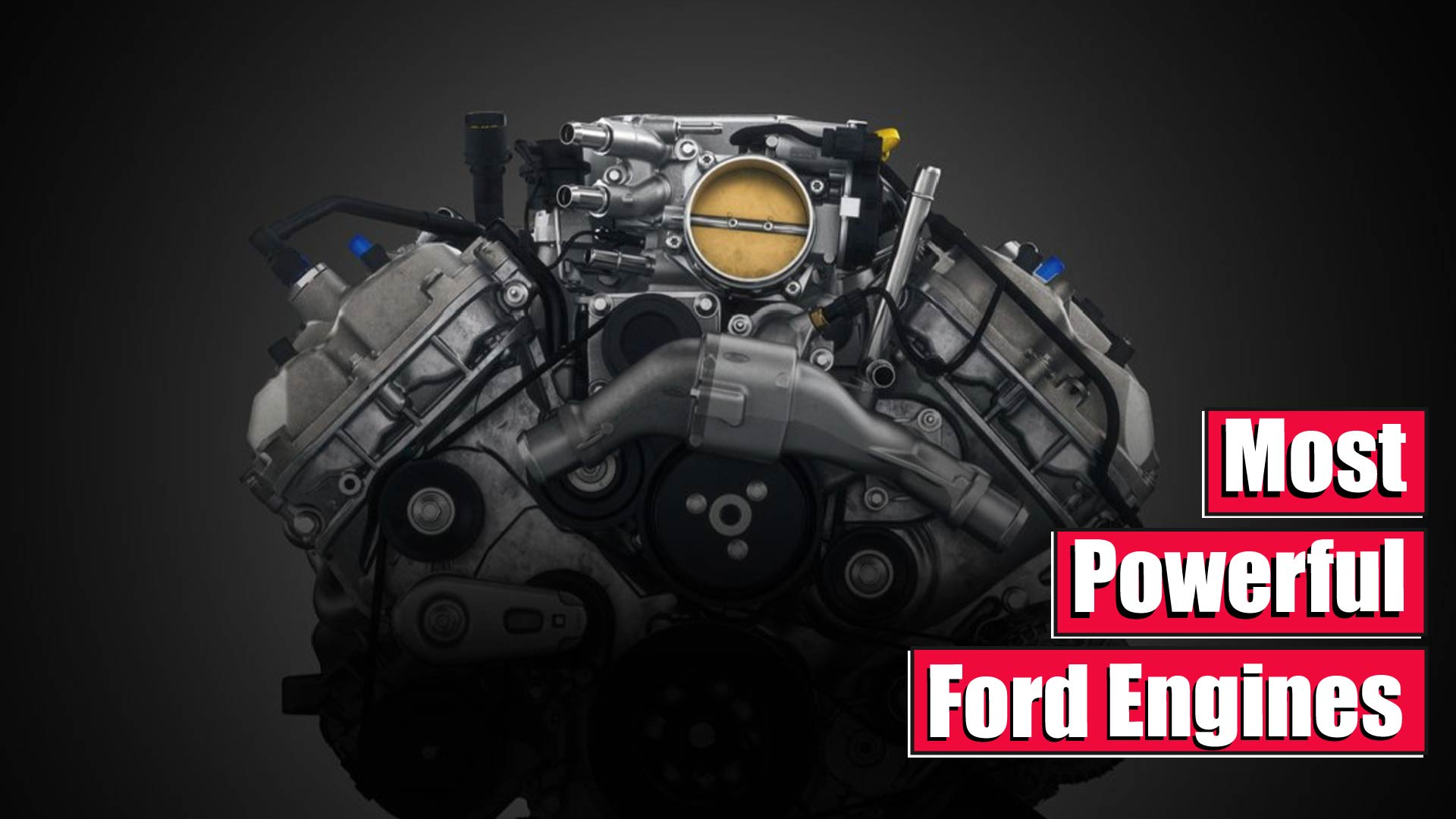
The 16 Best Ford Engines Of All Time, Ranked By Power
These engines are all iconic and deserve a place in the Ford hall of fame; check out which are the most powerful.6 428 Cobra Jet
Ford Cobra Jet V8 Engine Specs
|
Manufacturer |
Ford |
|
Production Years |
1968 - 1970 |
|
Configuration |
Naturally-aspirated V8 |
|
Displacement |
7.0 liters |
|
Power |
335 hp |
|
Torque |
440 lb-ft |
|
Fuel |
Gasoline |
|
Noteworthy Applications |
Ford Mustang, Cougar, Shelby GT500KR, Fairlane, Torino, Cobra; Mercury Cougar, Comet, Cyclone, CJ, Montego |
The Cobra Jet V8 Powered Both The Mustang And The Torino
With 427 Medium Risers becoming obsolete in the late 1960s, Ford introduced the 7.0-liter Cobra Jet V8 as a durable, powerful, yet affordable muscle engine to take on Chevrolet's 427 V8, Pontiac's 428 V8, and Mopar's 426 Hemi. One of the things that make the Cobra Jet V8 special is that while Ford officially claimed a 335-hp output, the engine was eventually rated at 400 to 450 hp. The 428 Cobra Jet and even rare Super Cobra Jet engines had enough grunt to claim Stock Car Championships and several illegal street races.
Ford offered the Cobra Jet as the top engine choice in the Ford Mustang and an optional powertrain for models like the Torino. Today, most remember the incredibly reliable Cobra Jet as the ultimate Mustang power plant.
428 Cobra Jet Reliability
- Average Yearly Maintenance Cost (RepairPal): $709 (Ford Mustang average)
- Est. Maintenance Cost During The First 10 Years (CarEdge): $7,093 (Mustang average)
Like the other entries on this list of the most reliable Ford engines ever built, the Cobra Jet V8 is known for its stout construction and strong internals. One owner of a 1969 Ford Torino Talladega 428 CJ gave it a perfect 10 out of 10 for reliability, indicating its high satisfaction with its dependable performance.
|
Review Date |
Model |
Review Site |
Reliability Score |
Reported Mileage |
|
May 30th 2008 |
1969 Ford Torino Talladega 428 CJ |
Carsurvey |
10/10 |
134,500 miles |
5 Flathead V8
Ford Flathead V8 Engine Specs
|
Manufacturer |
Ford |
|
Production Years |
1932 - 1954 |
|
Configuration |
Naturally-aspirated V8 |
|
Displacement |
2.2 - 5.5 liters |
|
Power |
65 - 154 hp |
|
Torque |
94 - 275 lb-ft |
|
Fuel |
Gasoline |
|
Noteworthy Applications |
Ford Model 18, Model 48, F7, F8; Mercury Eight, Custom, Lincoln Cosmopolitan, EL: Simca Vedette, Chambord |
The Flathead V8 Was Ford's First Mass-Produced V8 Engine
Revered as the first highly influential Ford power plant, the Flathead V8 was the automaker's first mass-produced V8. Booming with new technology and an impressive-for-the-era 65 hp, Ford beat its biggest competitor, Chevrolet, to V8 power by more than two decades. Over twenty years of production, power grew to 125 hp, putting the Flathead-equipped luxury Fords of the day as the most powerful in the class.
The most important aspects of the Flathead V8 were its durability and tuning potential, with a few mechanical tweaks almost doubling the power. The Flathead V8 aftermarket offerings that arrived later became the first engine tuners for the community and hot rod crews. In fact, a vintage flathead V8 even found its way into a custom MINI Cooper rat rod.
Flathead V8 Reliability & Maintenance Costs
- Average Yearly Maintenance Cost (RepairPal): $775 (Ford average)
- Est. Maintenance Cost During The First 10 Years (CarEdge): $9,860 (Ford average)
The Flathead V8 is well-regarded by owners for its reliability. One owner of the Customline gave it a perfect 10 out of 10 for reliability, noting, "It goes and goes and goes...," emphasizing its highly durable nature.
|
Review Date |
Model |
Review Site |
Reliability Score |
Reported Mileage |
|
Sep 9th 2006 |
1952 Ford Customline Fordor 3.9 Flathead V8 |
Carsurvey |
10/10 |
N/A |
4 427 Big Block V8
Ford 427 Big Block V8 Engine Specs
|
Manufacturer |
Ford |
|
Production Years |
1958 - 1976 |
|
Configuration |
Naturally-aspirated V8 |
|
Displacement |
7.0 liters |
|
Power |
390 - 657 hp |
|
Torque |
460 - 575 lb-ft |
|
Fuel |
Gasoline |
|
Noteworthy Applications |
Ford GT40, Galaxie, Thunderbolt, Fairlane, Shelby Cobra, Mustang GT500; Mercury Comet, Cougar |
The 427 V8 Big Block Powered The Ford GT40 To Its Legendary LeMans Victory
Ford designed the legendary 427 big blocks for one important objective; to dominate motorsports in the 1960s. A bored-out version of the 390 FE V8, the 427 featured a high-nickel iron alloy block, a forged crankshaft, solid lifters, and a side-oiling system to keep the engine lubed.
The bulletproof 427 V8 big-block proved its mettle after motivating the iconic Ford GT40 to the legendary 1966 Le Mans victory and the memorable laurels of the big-block Shelby Cobra roadster. However, the engine was rare on the street due to its high cost, both in production and on window stickers.
Ford 427 Big Block V8 Engine Reliability & Maintenance Costs
- Average Yearly Maintenance Cost (RepairPal): $709 (Ford Mustang average)
- Est. Maintenance Cost During The First 10 Years (CarEdge): $7,093 (Mustang average)
As mentioned, the Ford 427 big block V8 engine is based on the 390 FE V8, which is itself one of the most reliable Ford engines capable of clocking 500,000 miles. This, and the use of a high-nickel iron alloy block, aluminum cylinder heads, as well as a forged crankshaft, means you can trust that this engine is built tough and designed to withstand any challenge.
|
Review Date |
Model |
Review Site |
Reliability Score |
Reported Mileage |
|
Sep 29th 2003 |
1966 AC Cobra 427 S/C 427 ci V8 |
Carsurvey |
8/10 |
N/A |
3 Boss 302
Ford Boss 302 Engine Specs
|
Manufacturer |
Ford |
|
Production Years |
1969 - 1970 |
|
Configuration |
Naturally-aspirated V8 |
|
Displacement |
4.9 liters |
|
Power |
290 hp |
|
Torque |
290 lb-ft |
|
Fuel |
Gasoline |
|
Noteworthy Applications |
Ford Boss 302 Mustang, F-Series, Thunderbird, Fairlane, Torino, Crown Victoria |
The Boss 302 Helped Ford Win The 1970 Trans Am Series
One of the interesting things to know about the Boss 302 was that while the Boss 429 took on NASCAR, the Boss 302 was Ford's beast for Trans Am racing. Without Carroll Shelby in their corner, Ford built the Boss 302 with high-performance connecting rods, forged pop-up pistons, a forged crankshaft, a tall deck, and an aggressive camshaft for the Ford Mustang and Mercury Cougar.
The relatively affordable but indestructible Boss 302 was not a world-beater in the muscle car street wars, but the 290 hp and 290 lb-ft of torque made it a high-performance unit on the racetrack. Despite competition from Dodge, Chevrolet, and Chrysler, the Boss 302 engine helped Ford to win the championship title in 1970.
Ford Boss 302 Reliability & Maintenance Costs
- Average Yearly Maintenance Cost (RepairPal): $1,081 (Ford Crown Victoria average)
- Est. Maintenance Cost During The First 10 Years (CarEdge): $7,093 (Mustang average)
The Boss 302 is not only one of Ford's legendary engines but also stands as one of the most reliable engines the Blue Oval has ever made. Every aspect of this engine was meticulously designed to endure the demands of high-performance conditions, resulting in a truly bulletproof powerplant.
|
Review Date |
Model |
Review Site |
Reliability Score |
Reported Mileage |
|
Jun 14th 2010 |
1970 Ford Fairlane ZD 302 V8 |
Carsurvey |
6/10 |
49,709 miles (80,000 kilometers) |
|
April 8th 2007 |
1969 Ford Mustang 302 V8 |
Carsurvey |
6/10 |
176,000 miles |
|
Jun 12th 2002 |
1970 Ford Mustang Coupe 302 |
Carsurvey |
6/10 |
78,000 miles |
2 5.0 EFI High Output
Ford 5.0 EFI High Output Engine Specs
|
Manufacturer |
Ford |
|
Production Years |
1986 - 2000 |
|
Configuration |
Naturally-aspirated V8 |
|
Displacement |
5.0 liters |
|
Power |
185 - 225 hp |
|
Torque |
270 - 300 lb-ft |
|
Fuel |
Gasoline |
|
Noteworthy Applications |
Ford Mustang, Thunderbird, Fairlane, Falcon; Mercury Cougar, Mountaineer; Lincoln Mark VII |
The 5.0 EFI H.O. Saved Ford's Muscle Cars In The 1980s
The malaise era forced Ford to produce low-compression engines that were shadows of the glorious V8s at the peak of the muscle car era. Nonetheless, the venerable 5.0 V8 was no slouch compared to the competition, offering a diminutive 140 hp that later rose to 225 hp with the EFI intake system introduced in the mid-1980s.
The 5.0 EFI was one of the Ford engines that revolutionized the automotive industry as it boasted great balance, good fuel efficiency, proven technology, high tuning potential, and, most importantly, rock-solid reliability. Along with the Chevy small-block, the 5.0 EFI H.O. is one of the legends credited with saving American performance and muscle cars in the 1980s.
5.0 EFI High Output Reliability & Maintenance Costs
- Average Yearly Maintenance Cost (RepairPal): $433 (Ford Thunderbird average)
- Est. Maintenance Cost During The First 10 Years (CarEdge): $7,093 (Mustang average)
The 5.0 EFI High Output V8 is yet another Ford engine that's known for its reliability and ability to rack up high mileage. In fact, one owner of a 1986 Ford F150 XLT Lariat 5.0 liter EFI on Carsurvey even reported reaching a whopping 1,093,000 miles with this engine.
|
Review Date |
Model |
Review Site |
Reliability Score |
Reported Mileage |
|
Aug 30th 2009 |
1986 Ford F150 XLT Lariat 5.0L EFI |
Carsurvey |
8/10 |
75,000 miles |
|
Mar 18th 2008 |
1986 Ford F150 XLT Lariat 5.0 liter EFI |
Carsurvey |
8/10 |
1,093,000 miles |
|
Aug 8th 2007 |
1986 Ford F150 XLT Lariat 302 EFI V8 |
Carsurvey |
10/10 |
152,000 miles |
|
Jan 23rd 2011 |
1987 Ford Country Squire LX 5.0 EFI |
Carsurvey |
9/10 |
65,700 miles |
|
Oct 5th 2010 |
1983 Ford Country Squire 5.0 302 V8 |
Carsurvey |
10/10 |
124,586 miles |
1 5.0 Coyote V8
Ford 5.0 Coyote V8 Engine Specs
|
Manufacturer |
Ford |
|
Production Years |
2010-present |
|
Configuration |
Naturally-aspirated V8 |
|
Displacement |
5.0 liters |
|
Power |
412 - 500 hp |
|
Torque |
390 - 420 lb-ft |
|
Fuel |
Gasoline |
|
Noteworthy Applications |
Ford Mustang, F-150 |
The Boss 302 And The Voodoo V8 Were Based On The Coyote V8
When Ford resurrected the 5.0, the new engine used the overhead camshaft modular family instead of the original pushrod configuration. Ford designed the 5.0 Coyote V8 specifically for the Mustang, incorporating high-tech features such as twin variable camshaft timing on the intake and exhaust, webbed aluminum block, and direct fuel injection.
One of the reasons why Ford uses the Coyote V8 for its muscle cars is the engine's reliability. Moreover, thanks to its durability and tuning potential, the 5.0 Coyote was the basis for the Boss 302 special edition and the 5.2-liter Voodoo V8 in the Shelby GT350 that set the stage for the supercharged Predator in the Shelby GT500.
Ford 5.0 Coyote V8 Engine Reliability & Maintenance Costs
- JD Power Quality And Reliability Score: 86/100 (2022 Ford F-150)
- Average Yearly Maintenance Cost (RepairPal): $788 (Ford F-150 average)
- Est. Maintenance Cost During The First 10 Years (CarEdge): $10,245 (F-150 average)
No list of the most reliable Ford engines would be complete without the 5.0 Coyote V8. This engine is exceptionally solid, boasting features such as a cast iron block, aluminum cylinder heads, hypereutectic aluminum pistons, and forged steel connecting rods, among other robust components. As a result, it is able to withstand abuse while delivering the outstanding performance you would expect from such a high-performance engine, without any compromise.
|
Review Date |
Model |
Review Site |
Reliability Score |
Reported Mileage |
|
Aug 4th 2023 |
2013 Ford Mustang GT Premium 5.0 |
Carsurvey |
9/10 |
120,300 miles |
|
May 1st 2021 |
2013 Ford Mustang Boss 302 5.0 |
Carsurvey |
10/10 |
10,500 miles |
Sources: Ford, Carsurvey, MotorReviewer, TuningPro, Reddit


